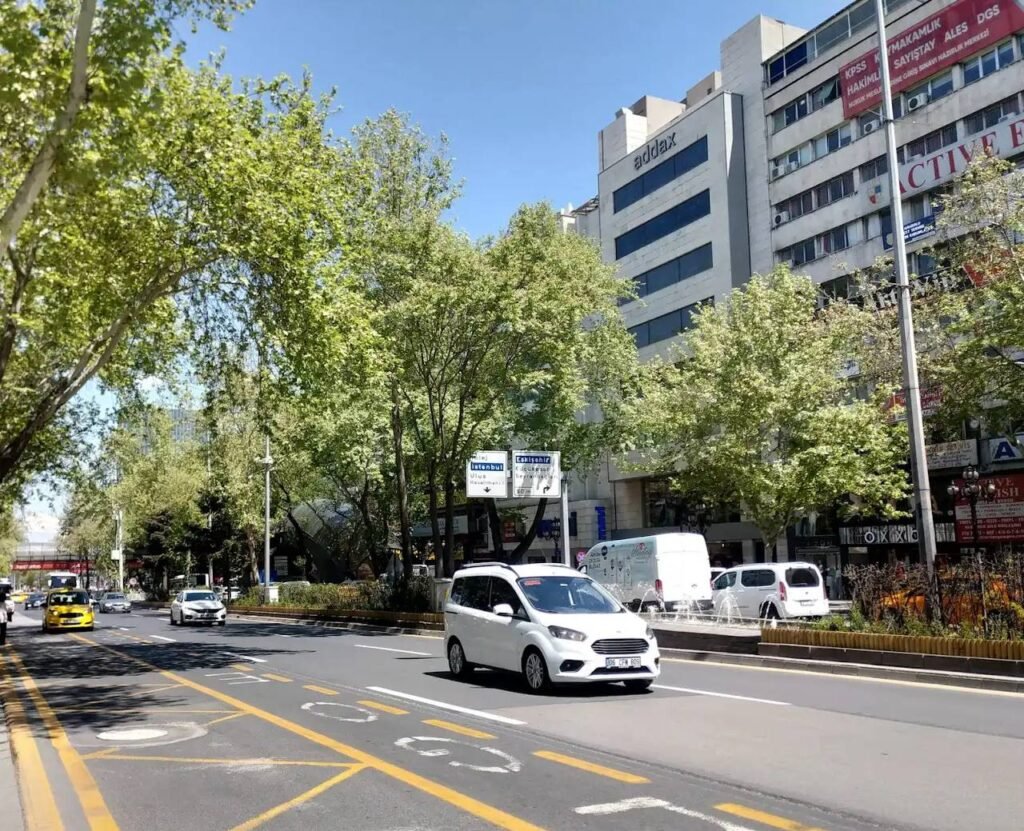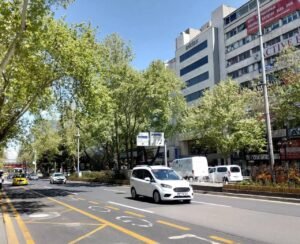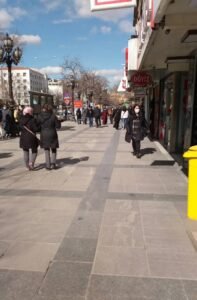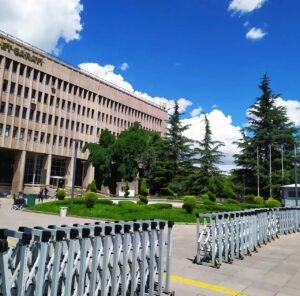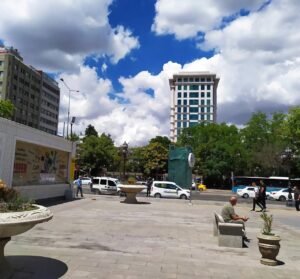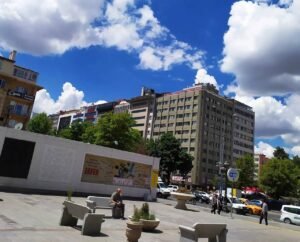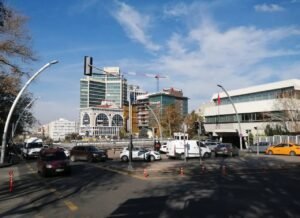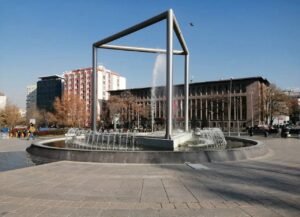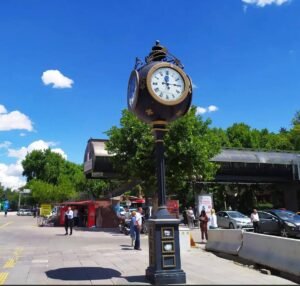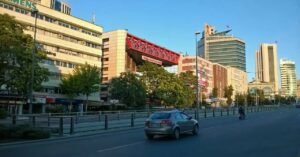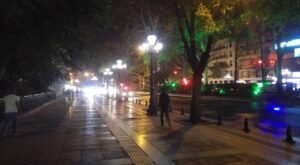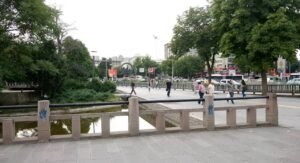Description
Discovering the Heart of Ankara: A Journey Along Atatürk Boulevard
In the heart of Turkey’s capital city, Atatürk Boulevard (Atatürk Bulvarı) stands as both a symbol of modern progress and a witness to the nation's historical evolution. Stretching from Sıhhiye in the south to Ulus in the north, this iconic thoroughfare is more than just a road—it is a living, breathing artery of Ankara’s soul. Whether you're a history enthusiast, architecture lover, or simply a curious traveler, Atatürk Boulevard offers an unforgettable experience that captures the essence of Turkish culture and identity.
A Road Steeped in History
Named after Mustafa Kemal Atatürk, the founder of the Republic of Turkey, Atatürk Boulevard embodies the vision and reforms that transformed a fledgling nation into a secular, modern state. Designed during the early Republican period in the 1930s, the boulevard was part of Ankara’s transformation from a modest Anatolian town into a vibrant political and administrative capital.
The architecture along the boulevard reflects this rich history. You’ll encounter elegant early Republican buildings, functionalist government complexes, and symbolic monuments that echo the aesthetic of a nation forging its new identity. Walking along the boulevard is like strolling through a timeline of Turkey’s 20th-century development.
Iconic Landmarks and Must-See Spots
Atatürk Boulevard is lined with notable landmarks that tell the story of Ankara’s past and present. Starting from the Sıhhiye Square, where the statue of “The Hittite Sun Course Monument” stands, the boulevard begins its journey through several key districts.
One of the most important stops is the Ministry of Health Building, an excellent example of early Republican architecture, constructed in the Bauhaus style. Further along, you’ll encounter the Grand National Assembly of Turkey (TBMM), the country’s legislative heart. While the main building is not open for casual visits, the surroundings offer ample photo opportunities and a sense of the weight of Turkish governance.
A short walk north brings you to Kızılay Square, the bustling commercial and transportation hub of Ankara. Filled with shopping centers, cafés, restaurants, and offices, Kızılay pulses with the energy of daily life in the capital. It’s an ideal place to pause, grab a traditional Turkish tea or a quick simit, and people-watch amid the city’s dynamic rhythm.
Cultural Gems and Museums
Just off Atatürk Boulevard lie several cultural highlights worth detouring for. The Ethnography Museum of Ankara, located slightly to the east of the boulevard, showcases artifacts that reflect the cultural diversity of Anatolia. With exhibits on traditional clothing, weapons, carpets, and musical instruments, it offers a fascinating insight into Turkish heritage.
A bit further down the road is Ankara Opera House, the home of Turkish State Opera and Ballet. Built in 1948, it hosts a variety of performances throughout the year. If you're lucky, you might catch a classical concert or a modern ballet production during your stay.
Architecture and Urban Planning
Atatürk Boulevard also exemplifies the early ideals of urban planning in modern Turkey. Designed with the intention of showcasing Ankara as a model capital, the boulevard features wide lanes, tree-lined sidewalks, and clearly delineated public spaces. The influence of European urban planning is evident, particularly in the symmetrical layout and the integration of administrative, cultural, and residential zones.
Modern buildings now sit side-by-side with older structures, creating a dynamic and sometimes contrasting streetscape. Yet, there is a unique charm in this blend of old and new—it reflects Ankara’s growth and its ongoing dialogue with the past.
Local Life and Street Vibes
One of the most rewarding aspects of visiting Atatürk Boulevard is observing the daily life of Ankara's residents. Office workers rush between government ministries, students from nearby universities gather in cafés, and elderly men engage in animated conversations on park benches.
Street vendors dot the sidewalks, selling roasted chestnuts, Turkish bagels, or fresh seasonal fruit. In the evenings, the boulevard takes on a different character as it lights up and locals stroll along it for fresh air and conversation—a tradition known as akşam yürüyüşü (evening walk).
Dining and Culinary Delights
While Atatürk Boulevard itself is not overflowing with eateries, the surrounding side streets are packed with options. From traditional Turkish restaurants serving dishes like iskender kebap, mantı, or çiğ köfte, to modern fusion spots and international cuisine, there is something to suit every palate.
Be sure to try a Turkish coffee or menemen (a savory scrambled egg dish with tomatoes and peppers) at one of the many local diners. For dessert, a plate of baklava or künefe will surely satisfy your sweet tooth.
A Gateway to Ankara's Layers
As you move northward along the boulevard, you eventually reach Ulus Square, another historic and symbolic center of the city. Here lies the Monument of the Republic, built to honor Atatürk and the War of Independence. Not far from this square is the Museum of Anatolian Civilizations, housed in a beautifully restored Ottoman building that contains archaeological treasures spanning thousands of years.
From Ulus, it's a short climb to Ankara Castle, offering panoramic views over the city and beyond. This ancient citadel predates the modern era by centuries, serving as a reminder of Ankara’s deep and diverse history.
Practical Information
Atatürk Boulevard is easily accessible via public transportation. Several metro and bus lines run along or cross the boulevard, with Kızılay Metro Station serving as a major interchange. The area is walkable and generally safe, though like any major city, it's wise to stay alert, especially at night.
Comfortable shoes are recommended, as there’s a lot to explore on foot. English is not universally spoken, but many signs are bilingual, and locals are generally friendly and helpful.
Conclusion
Whether you’re a first-time visitor or a returning traveler, Atatürk Boulevard offers a vivid and immersive introduction to Ankara. It is a street where the past and present intersect, where monumental politics meets everyday life, and where every corner holds a story. Walking its length, you’ll not only see the face of modern Turkey—you’ll feel its pulse.
Location
-
Atatürk Blv
